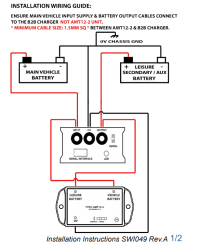Hi all,
I've been putting off doing the electrics for my camper conversion off for a while (mainly since I know very little about electrics!), but I think I'm finally at the point where I'm ready to start buying things.
I have attached a diagram of what I think the installation will look like.

The bits in the grey boxes (ie solar and EHU) are to come later. For now I'm just focusing on the core 12v bit.
Some general questions I have:
Any feedback most welcome!
edit: shoutout to @Dellmassive for the wiring diagrams, you may notice that this is my inspiration!
I've been putting off doing the electrics for my camper conversion off for a while (mainly since I know very little about electrics!), but I think I'm finally at the point where I'm ready to start buying things.
I have attached a diagram of what I think the installation will look like.

The bits in the grey boxes (ie solar and EHU) are to come later. For now I'm just focusing on the core 12v bit.
Some general questions I have:
- I haven't included the switches for 12V appliances, but I generally planned on using cbe compliant switches in a cbe panel. Are these likely to be rated highly enough for the draw I have? I'm wary about using cheap switches and panels that are not rated highly enough.
- I'll also be installing an Ablemail trickle charger to top up my vehicle starter battery. I know it sits between the two batteries, but can I simply put some kind of splitter on the cable before it terminates on the DC50S, so that I can take one feed to the DC50S and the other to the Ablemail? If so, what should I be looking for? (Told you I know nothing of electrics!!!)
- I did consider putting the switches for the diesel heater and fridge much closer to the leisure battery and have separate switches for them, but I'd like all the switches to be in one place. This of course does mean the cable run is longer, but I think I'm covered with the cable sizing I'm using. Any issues with that?
Any feedback most welcome!
edit: shoutout to @Dellmassive for the wiring diagrams, you may notice that this is my inspiration!



